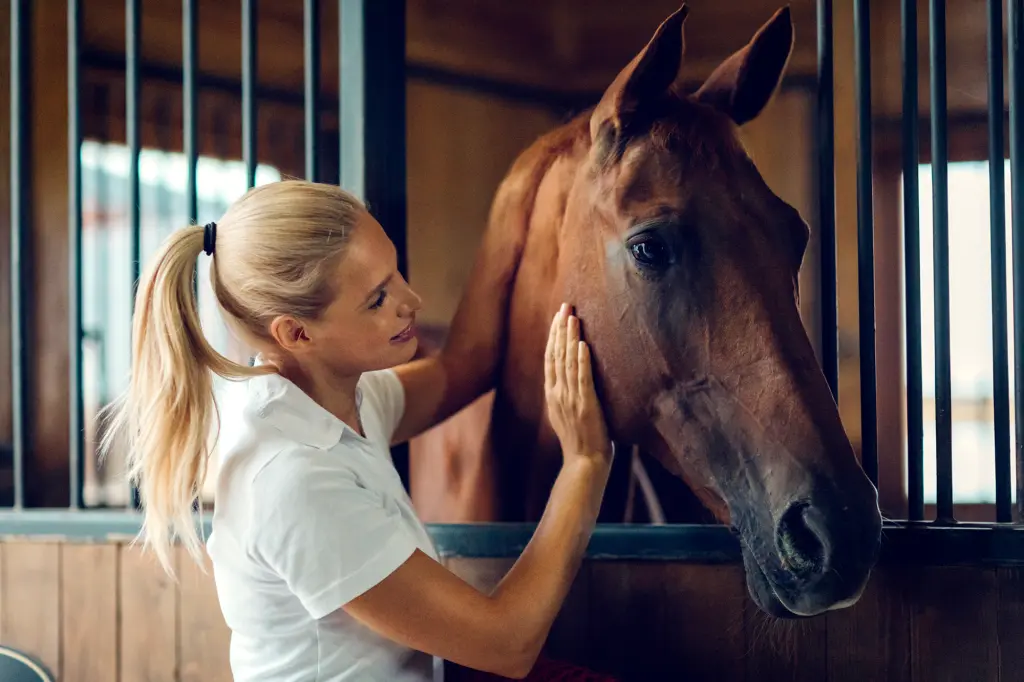Trust is the foundation of any strong relationship, and the bond between a horse and its handler is no different. Horses are sensitive and intuitive creatures, and building a trusting relationship requires understanding their behavior, maintaining consistency, and offering respect. Here’s how to create that solid foundation of trust with your equine companion. https://hearttohorses.com/
>> READ MORE:
- How Do You Know If a Horse Likes You?
- Unlock the Secrets of Equine Communication: Mastering the Body Language of Horses
Contents
Understanding Horse Behavior and Psychology
The journey to building trust with your horse starts with understanding their natural instincts and behavior. Horses are prey animals, meaning their first response to danger is to flee. This instinct makes them cautious and sensitive to their environment. To establish trust, create a sense of security by respecting their flight response and offering reassurance. Study their body language—ears pinned back, raised head, and nervous movements are signs of discomfort or fear. By responding calmly to these cues, you will demonstrate your understanding and gradually earn their trust.
Consistency in Handling and Routines
Horses thrive on routine and consistency. By providing a predictable environment, you help your horse feel safe and confident. Consistency in handling, feeding times, and interactions signals to your horse what to expect, reducing anxiety and building trust. Your behavior should also be consistent; always respond calmly and firmly, reinforcing boundaries and expectations. This reliability will help your horse feel secure in their relationship with you.
Communicating Through Body Language
Horses are highly perceptive and communicate largely through body language. Your gestures, posture, and energy all convey important signals to your horse. A calm and assertive demeanor will reassure your horse and establish respect. Avoid sudden, jerky movements or shouting, which can create fear. Instead, use gentle, confident motions, such as maintaining soft but firm eye contact, and always approach your horse slowly and with intention. Your horse will read these signals and respond to your leadership.
Patience Is Key
Building trust takes time, and patience is essential throughout the process. Every horse is different and may need varying amounts of time to adjust to new experiences or environments. Rushing the process can hinder the development of trust, so be prepared for gradual progress. Allow your horse to approach situations on their own terms, and always offer encouragement and support. Trust-building is a journey, not a destination, and it requires consistency, time, and positive reinforcement.
Bonding Through Grooming and Shared Time
Spending quality time with your horse outside of formal training sessions is a great way to build a deeper connection. Grooming your horse not only benefits their physical health but also offers an opportunity to bond in a calm, relaxing way. As you brush or bathe your horse, talk to them softly and pay attention to their reactions to different grooming tools. Similarly, shared activities such as light exercise or just spending time in their presence will help strengthen the bond between you.
Becoming a Trustworthy Leader
Horses look to their human handlers for leadership. Becoming a trustworthy leader involves more than just giving commands; it’s about establishing a relationship built on mutual respect. Display confidence in your actions and provide for your horse’s physical and emotional needs. Be consistent in your behavior, gentle but firm in your handling, and always prioritize their safety and well-being. When you demonstrate these qualities, your horse will see you as a reliable and trustworthy leader.
Conclusion: The Road to a Strong Bond
Building trust with your horse is a process that requires patience, understanding, and respect. Horses are unique individuals, and each will respond differently to different approaches. However, by focusing on consistency, communication, positive reinforcement, and a genuine desire to build a relationship, you can create a deep and lasting bond with your horse. Trust is earned through time, and with the right mindset and actions, you will develop a partnership that is both fulfilling and rewarding for both you and your equine companion.

